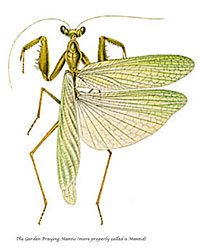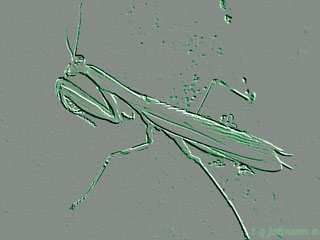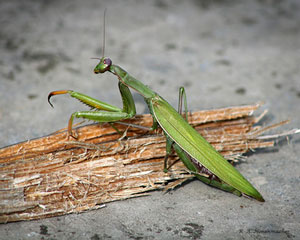Class: Insecta
Order: Mantodea
Family: Mantidae
Mantodea: Praying Mantids (Family Mantidae)
Among the most iconic and enigmatic insect predators found at Red Rocks is the Garden Praying Mantis. Belonging to Order Mantodea, mantids are instantly recognizable by their elongated bodies and powerful, raptorial front legs—specialized for grasping prey. The first leg segment, the coxa, is unusually long compared to most insects, enhancing their reach and precision.
Mantids are visual hunters, with large, forward-facing compound eyes capable of detecting motion from considerable distances. Remarkably, their triangular heads can rotate nearly 180 degrees, allowing them to “look over their shoulders”—a rare trait in the insect world.
Their mating behavior is infamous: females are known to sometimes consume males during or after copulation—a dramatic evolutionary strategy tied to nutrition and reproductive success. Despite this, mating can persist even after decapitation due to reflexive nerve activity, lasting for hours in some cases.
As autumn nears, female mantids seek shelter among fallen branches and vegetation to lay their eggs. They produce a foam-like ootheca, which hardens into a protective casing reminiscent of Styrofoam. This structure houses multiple developing embryos that will emerge in spring.
There are roughly 1,800 mantid species worldwide, mostly in tropical climates. Fossil evidence dates mantids back to the Cretaceous Period, around 130 million years ago, making them a long-standing player in the insect world.
From billion-year-old metamorphic rock to the predatory gaze of a mantis, the park stands as a dynamic classroom for scientists, naturalists, and curious visitors alike.

